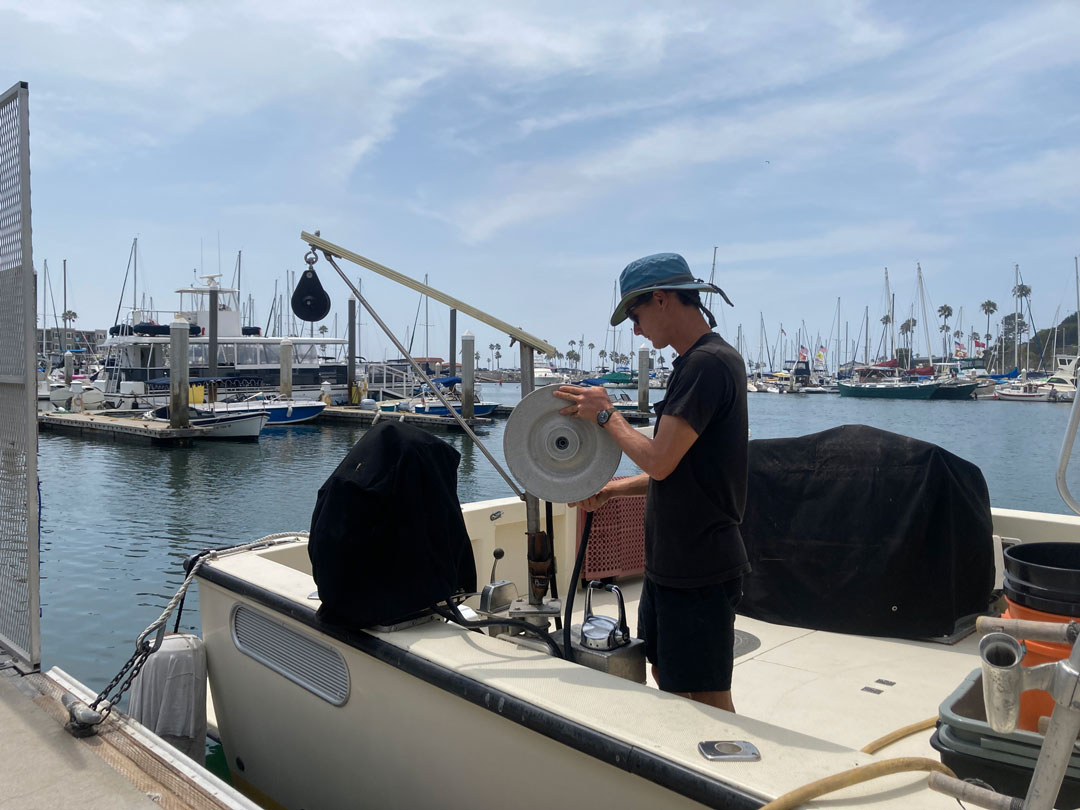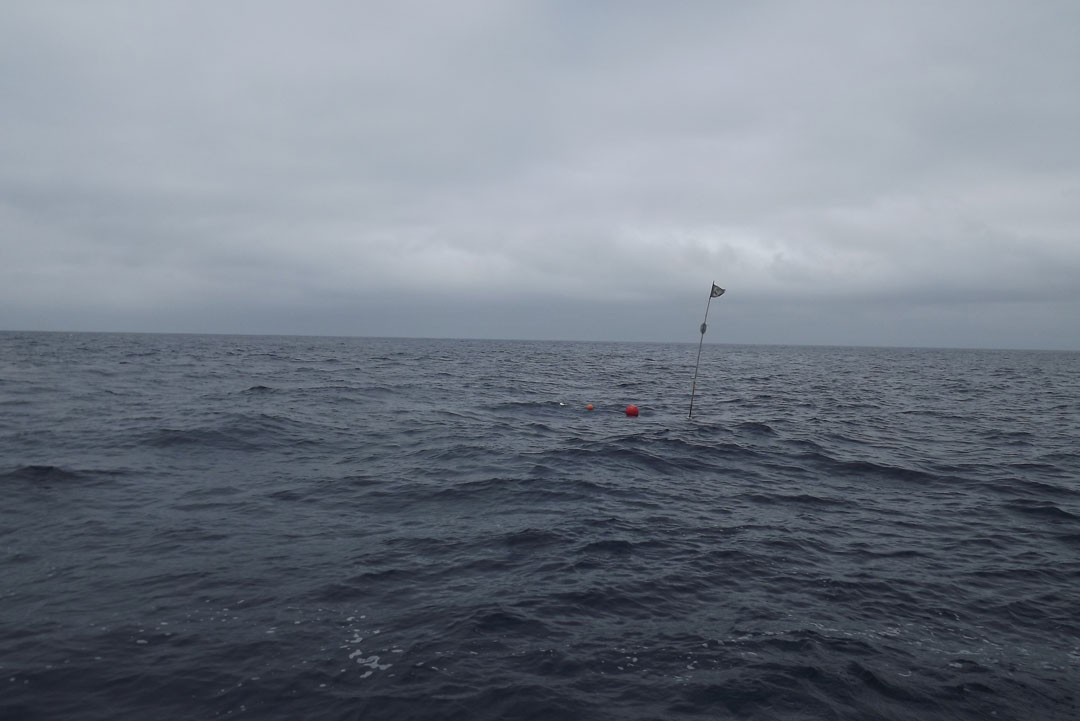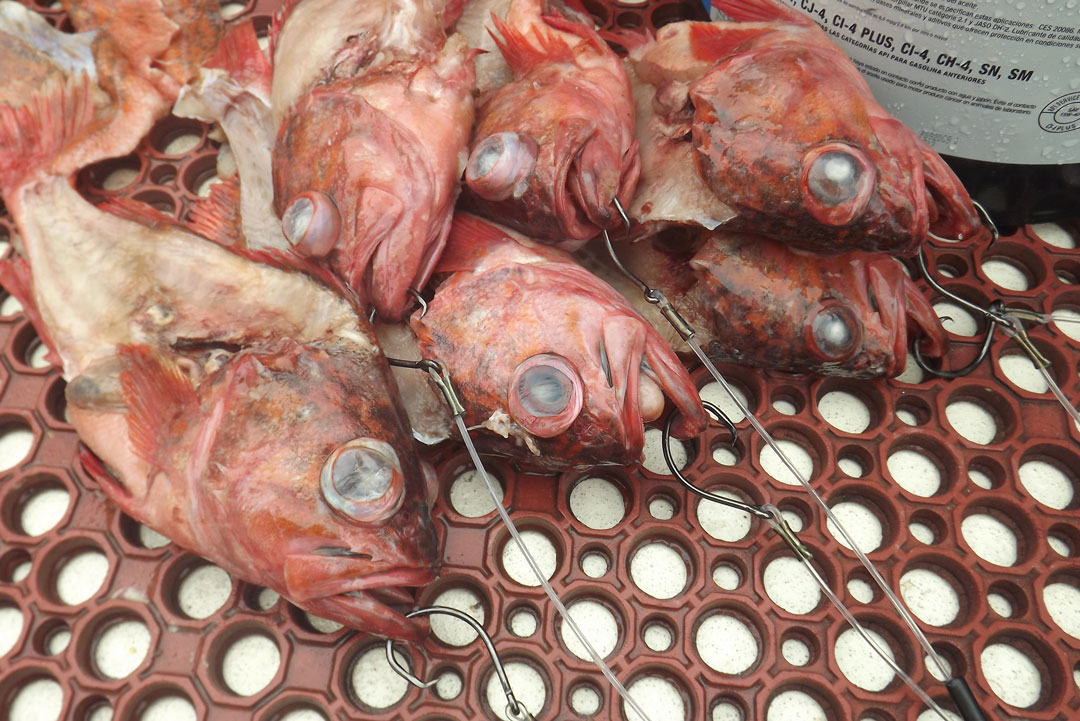Sleepy Fishing Part 2
A targeted set
It was late July when we decided to make a directed effort to catch and tag a sleeper shark from the R/V Malolo. While we’d normally base the timing of our tagging efforts on data such as regional biology and seasonal movement patterns, this had never before been measured or tested for sleeper sharks in California. As such, we made this effort when we did simply because the fishing for swordfish was slow. All we had to guide our efforts were the few records of previous interactions with the sharks on deep-set buoy gear and a handful of anecdotal accounts from other fisheries, and none of these could provide a conclusive pattern. The only thing to do was to go and try.

Photo © Michael Wang
Earlier in the week I rigged three sets of modified deep-set buoy gear that I believed would improve our chances of attracting a sleeper shark bite. The modified gear was not exceedingly different from that used in targeting swordfish, as I was determined not to eliminate any of the careful design features aimed at reducing harm to incidental catch such as sleeper sharks. It simply featured the addition of a length of line towards the bottom on which to attach additional baited hooks. The gear sets were loaded neatly onto large aluminum spools and brought aboard.
The morning of July 26th began auspiciously, with favorable weather and fair sea conditions. As we made the 30 nautical mile steam to the fishing grounds, I nervously made the final preparations for the set, rigging tags, baiting hooks, and assembling weights, flags, and buoys. We had chosen the location for the set based on our knowledge of Sleeper shark habitat from other regions of the world, previous interactions on deep-set buoy gear, and accounts from other fishers in the area. We arrived around 10am and with our chart plotter and sonar located a wide, flat, muddy seamount along an underwater ridge. We rolled out our three sets of gear and the waiting began.

Photo © Michael Wang
All day we tacked back and forth between each piece of gear, scrutinizing the array of buoys that suspend the weight and hooks below and that act like a bobber to indicate activity on the line. Any change in the way the buoys floated would have meant a bite of some kind. All day we looked carefully for a change in the buoys, but the change we hoped for never came. At around sunset, we hauled each piece of gear back onto its aluminum spool. As is customary, I inspected the baits we retrieved for signs of nibbling or chewing, but each bait came up as intact as before it was set. With nothing to give us an indication of hope the following day, we packed up and returned home.

Photo © Michael Wang
It’d be easy to write off a trip like this as a failure. However, as a scientist, and additionally as a fisherman, I’ve trained myself to view failure in a different light. With every failed attempt comes an opportunity to learn and to share, yet all too often in science these vital pieces of information are brushed over or left out entirely, leaving the door open for others to make similar, uninformed judgements. So, I’ll instead report this attempt as one step towards a greater understanding of a very mysterious shark species. And you can be sure that the day a successful tagging of a sleeper shark occurs, you’ll hear about that too.
